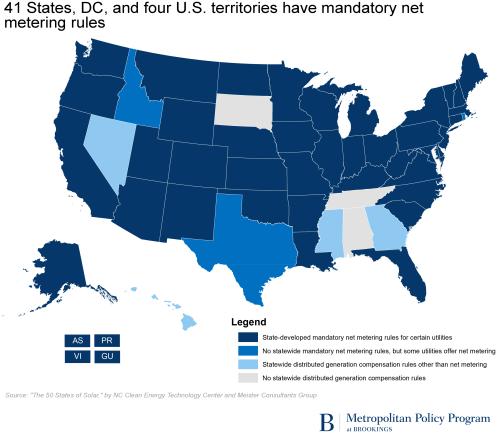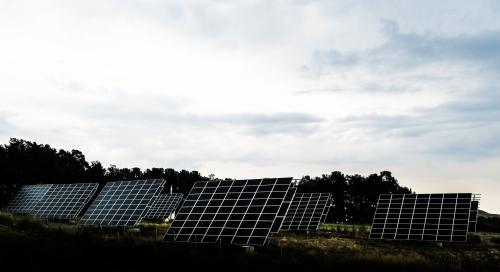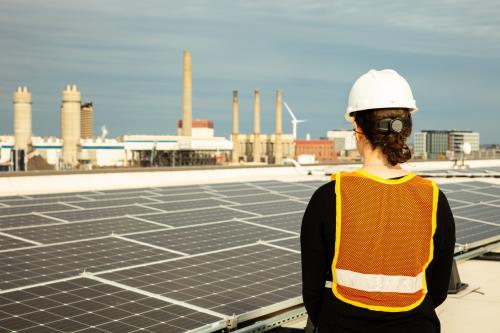The United States expects to increase spending on infrastructure by approximately 3 percent per year, from $700 billion in 2014 to more than $975 billion by 2025. At the same time, under the Paris climate agreement, the country has committed to reducing its greenhouse gas emissions by 2025 by 26 to 28 percent below the 2005 level. Meeting these two goals will require massive investments in low-carbon and climate resilient transportation, power, and water infrastructure.
Fortunately, the $3.7 trillion municipal bond market—which attracts investors with its high credit quality and unique tax advantages relative to other bonds—provides an unparalleled opportunity for green investments, and it appears that U.S. states and local governments are embracing this opportunity with unmitigated enthusiasm.
According to the Climate Bonds Initiative, the U.S. green municipal bond market is $30.3 billion strong, of which $9.7 billion are labeled green bonds and the remainder are bonds financing climate-aligned assets that do not carry an explicit green label. The U.S. municipal bond market has a long track record of issuing climate-aligned bonds. The Qualified Energy Conservation bonds and Clean Renewable Energy bonds have been available for a decade. But only recently has the market begun to label bonds as “green” in response to investor demand.
The green municipal bond market grew significantly in 2015, with $4.7 billion in issuance, up 47 percent from 2014. Washington State was the largest municipal issuer of labeled green bonds, with more than $1 billion issued. Massachusetts and New York followed, with $915 million and $479 million, respectively.

Green municipal bonds in the United States finance primarily transportation and water-related infrastructure projects. In 2015, for instance, the Seattle Transit Authority issued $923 million in green bonds in what is being called the largest green bond issuance by a municipal authority. The bond proceeds will be used to expand the region’s light rail system. In 2014, DC Water Authority issued a $350 million taxable, fixed rate green bond with a 100-year final maturity, making it the first U.S. municipal water/wastewater utility to issue a century bond and the first U.S. green bond issuance to include an independent second-party opinion. Since then, Connecticut, Cleveland, Indiana, San Francisco Public Utilities Commission, and St. Paul, Minn. have also issued green water bonds. Green bonds are also being used to finance projects in other sectors, including energy efficiency, renewable energy, and waste and pollution.

The rapidly expanding—and largely self-regulated—market, however, has come with growing pains. One challenge is how “green” is defined, which is a concern for both investors and environmental groups. To date, the definition of “green” has varied with each issuer. “Greenwashing”—when the proceeds are used for projects that are not environmentally friendly—can undermine the credibility of the market. However, the market is evolving rapidly, and third-party groups have emerged to track issuers for the life of green projects, thus holding them accountable to certain standards. The San Francisco Public Utilities Commission’s $240 million green bond for water issued in 2016 is noteworthy for this reason. It is the first entity to issue a green bond certified under the Water Climate Bonds Standard, which specifies the criteria that must be met for bonds labelled “green” or earmarked for funding water-related, low carbon initiatives.
Furthermore, even though green bond sales have surged in response to demand from socially conscious investors, it is not yet clear whether they offer any definitive pricing benefit over traditional bonds. At the same time, states and municipalities can incur extra cost and additional work—getting a second opinion, reporting on the use of proceeds, impact reporting, among other things—to issue explicitly labeled green bonds. Extra work is needed to track the use of proceeds and report the information to investors, for example. The estimated cost of an independent review is $10,000–$50,000, depending on who is doing the review and other factors. The situation may change as investment in green projects increases.
Notwithstanding these challenges, the green municipal bond market is expected to grow rapidly as climate change raises the urgency for low-carbon and environmentally sustainable projects. In addition, a new class of environmentally conscious investors is seeking to invest in projects that foster a positive environmental and social impact. These trends provide a unique opportunity for state and local governments to tap into the growing market to access financing for a multitude of infrastructure and climate projects.






Commentary
Green bonds take root in the U.S. municipal bond market
October 25, 2016